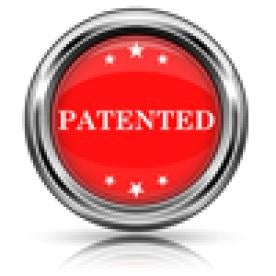Takeaway: Patent Owner prevailed in this case, at least in part, by persuading the Board to revise its original claim construction position provided in its Decision on Institution.
In its Final Written Decision, the Board found that Petitioner had not proven, by a preponderance of evidence, that any of instituted claims, claims 1-5, 7-13, 15, and 16, of the ’662 Patent are unpatentable. The Board had not instituted grounds against claims 6 and 14. The ’662 Patent relates to “a hook for attaching an endoluminal prosthesis, such as a graft or stent, within an artery, vein, or other type of corporeal lumen.”
The Board began with claim construction, stating that the terms are to be interpreted according to their broadest reasonable construction in light of the specification of the patent in which they appear. The Board focused its claim construction on the term “permanent curve.” The Board noted that the ’662 Patent did not provide any express definition of the term, and did not use the exact term except in the claims. However, the Board noted that the Examiner during prosecution of the ’662 Patent articulated the broadest reasonable interpretation as “a preset curve that . . . maintains a permanent curve regardless of what configuration the device is in.” Based on expert testimony by Petitioner, the Board agreed with the Examiner’s broadest reasonable interpretation. Patent Owner did not disagree with the claim construction, but argued that the claim construction narrowly demands a fixed arc that does not vary during use and thus does not encompass a resilient, flexible member that maintains some degree of curvature even where the arc of the curve may change due to compressive forces. Specifically, Patent Owner argued that “engagement members that resiliently return to a memorized shape embody the opposite of a permanent curve.” The Board agreed with Patent Owner that, considering the teachings of the Specification, the “curve element must be permanent, as recited in the claims, rather than “resiliently flexible.” Accordingly, the Board revised its claim construction provided in the decision on institution to be “a preset curve that maintains a fixed arc throughout normal use regardless of what configuration the device is in.”
The Board then discussed the first ground of unpatentability – anticipation by Lefebvre. Petitioner argued that the device of Lefebvre has a permanent curve consistent with the Board’s claim construction, based on its expert’s modeling of the device. Based on the modeling, Petitioner’s expert “testifies that as the catheter sheath covers the Lefebvre device, ‘there will be portions of the curve formed in place of bend 20 that do not experience any force from the catheter. Those portions will remain unchanged and maintain the same curve in either the compressed or expanded configurations.’” Patent Owner’s expert “argues that nothing in Lefebvre indicates that the teeth have a permanent curve,” and instead the teeth, which are described as elastic, would be expected to not have a permanent curve. The Board agreed with Patent Owner, because Petitioner’s expert only addressed the compressive effects during the application of a catheter sheath and not in the full scope of its normal use, as required by the Board’s claim construction. Additionally, the Board found Petitioner’s expert’s analysis speculative and thus gave it little weight. Accordingly, the Board concluded that Petitioner had not proven by a preponderance of the evidence that Lefebvre anticipates claims 1-5, 7-13, 15, and 16.
The Board then discussed the obviousness rejections, and in particular the ground of unpatentability – obviousness over White in view of Ostrovsky. First, the Board assessed White for its alleged teaching of “permanent curve” and agreed with Patent Owner that there was nothing in White indicating that the engagement members have a permanent curve. Second, the Board assessed whether Ostrovsky remedied the deficiencies of White, and found that it did not. Accordingly, the Board found that Petitioner had not met its burden to show any of the claims as unpatentable.
Metronic, Inc. and Medtronic Vascular, Inc. v. Lifeport Sciences LLC, IPR2014-00288
Paper 34: Final Written Decision
Dated: April 21, 2015
Patent: 7,147,662
Before: Lora M. Green, Scott E. Kamholz, and Robert A. Pollock
Written by: Pollock



 i
i


